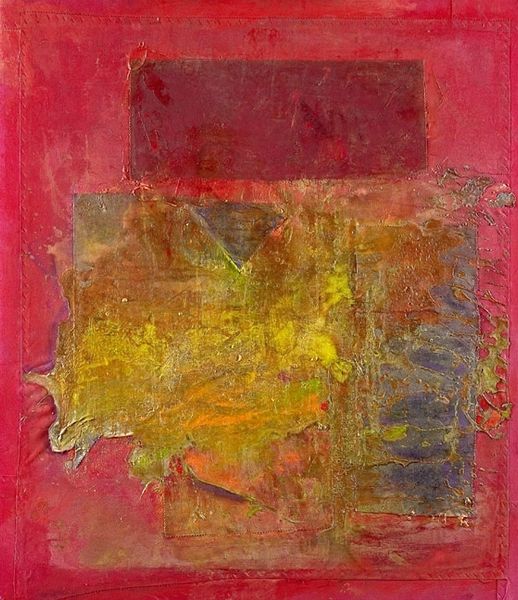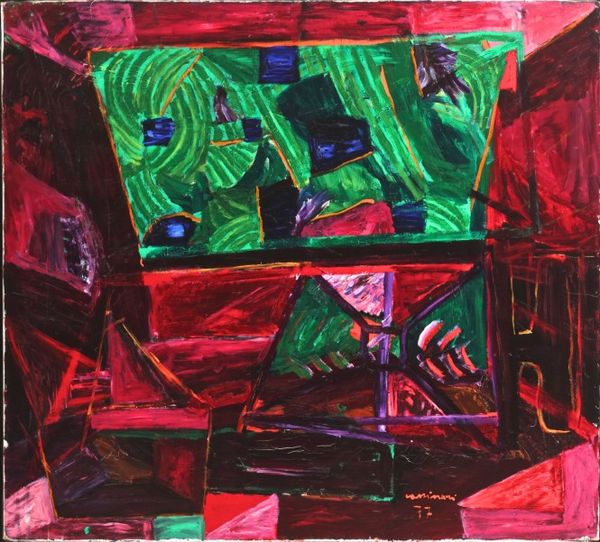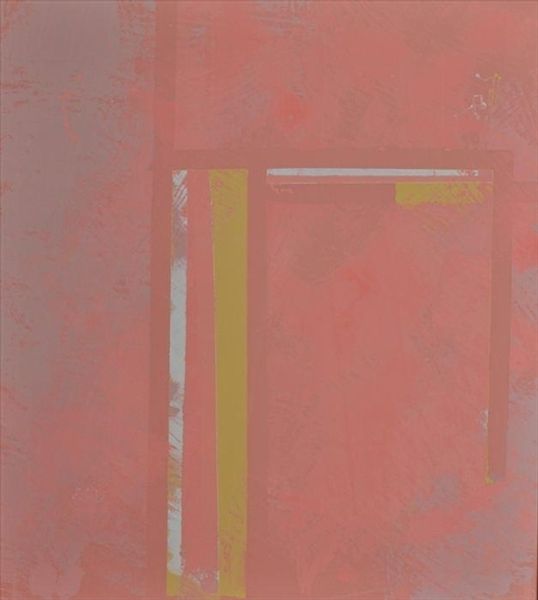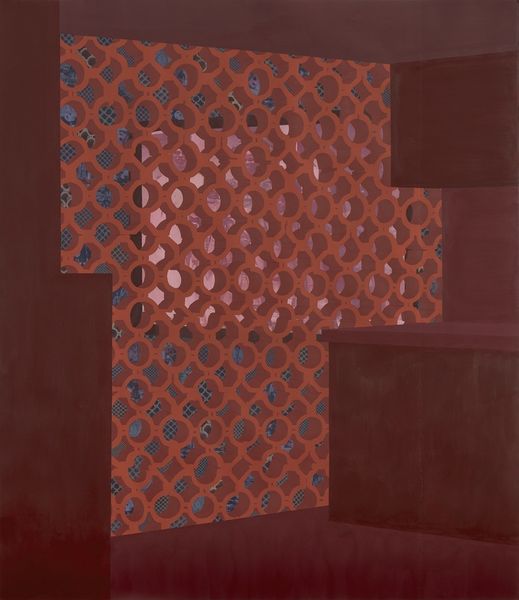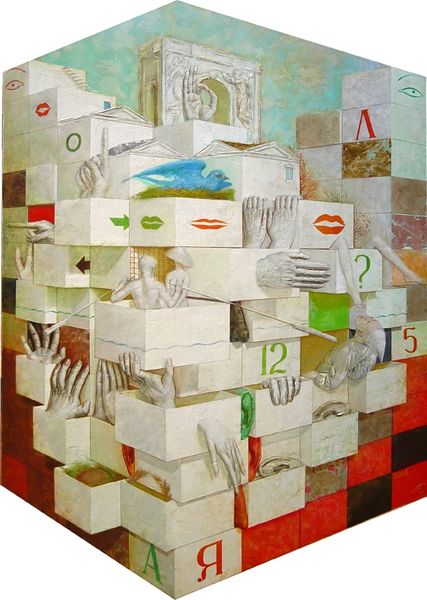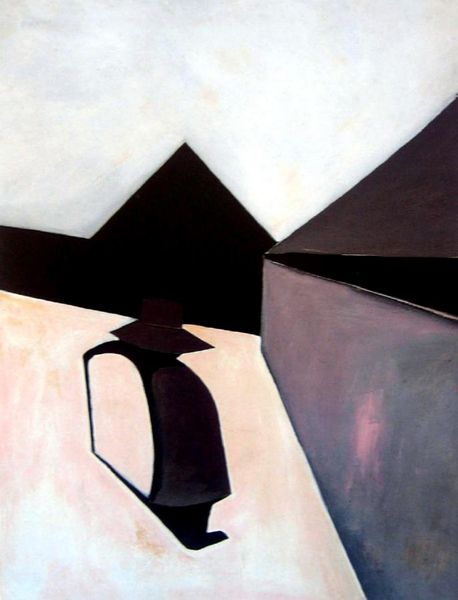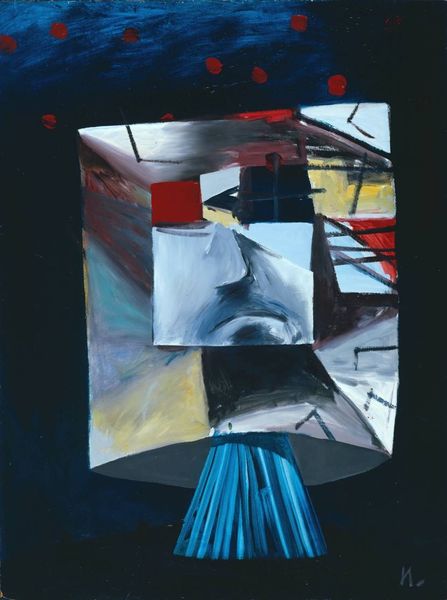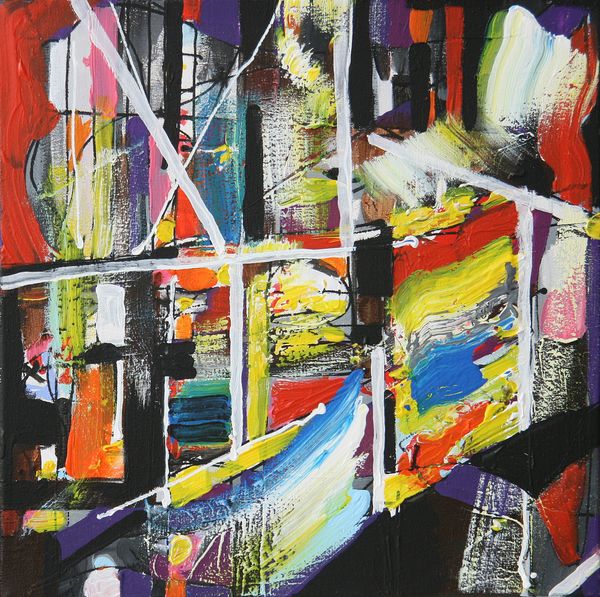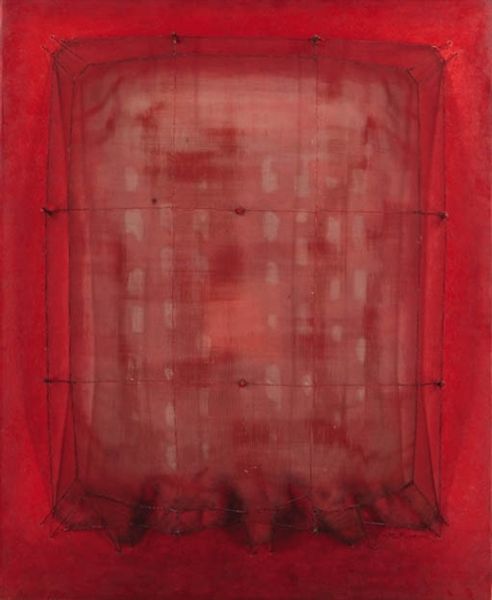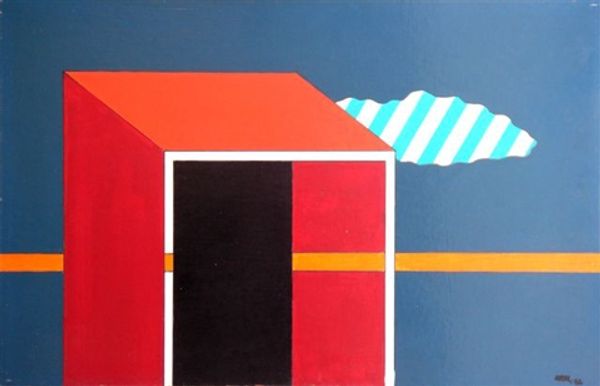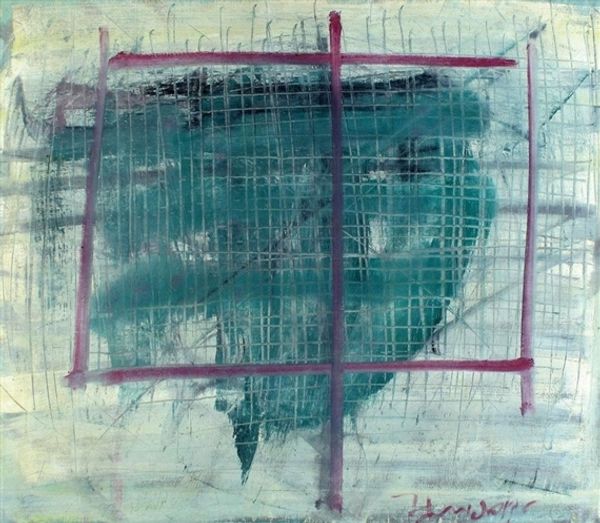
oil-paint
#
gouache
#
oil-paint
#
oil painting
#
acrylic on canvas
#
geometric
#
modernism
#
watercolor
Copyright: Guntis Strupulis,Fair Use
Curator: Looking at Guntis Strupulis' piece titled "Klusā daba," I'm immediately struck by its interplay between geometric structure and implied chaos. What grabs you? Editor: Well, first the red backdrop contrasting the black lower plane sets a theatrical stage. I find myself questioning, "What stories could be contained in the interplay between those vials, those stark frames, that vibrant background?" What about the artist’s process, specifically, informs this somewhat dreamlike stage? Curator: It's intriguing. This canvas, worked with oils, gouache, and possibly even acrylic paint, speaks volumes about experimentation with materials, right? I can imagine Strupulis wrestling with layering and transparency. It also forces me to consider questions of value - is the paint itself more 'important' than the form it renders? Editor: The red’s uneven, speckled finish and that severe contrast in light value further accentuate an almost harsh feel. So many art historical moments—De Stijl or Suprematism—spring to mind, especially when I examine how the depicted cubic shapes redefine notions of space. Given that artistic lineage, what can this artist teach us about the ongoing cultural fixation with these severe geometries? Curator: Good point! I think he reclaims some human touch that those movements strived to eliminate. The slightly imprecise lines making the forms prevent a sterile impression; in that regard, I would love to get a sense of the consumption of this aesthetic today. What venues showcased Strupulis’ work, and what messages did that pairing send to his audience about how it fit within larger cultural conversations about modern art? Editor: Agreed; understanding Strupulis' position in relation to his contemporaries is important. Perhaps Strupulis saw Modernism and other similar movements becoming relics; staging glass bottles within severe frames makes me think that he sought to recontextualize those ideas, presenting them almost like remnants found on a theatrical stage set long after the main production. Curator: Right! In that sense, one could propose this as an archaeology of forms and artistic heritage, reflecting on materials both physical, like the various paints he has deployed, and historical. It certainly enriches one’s understanding when approaching work like this in a contemporary setting, and is vital to any museumgoer or scholar looking for avenues to extend beyond the canvas in question! Editor: It indeed gives pause and asks, “What roles are our aesthetic tastes playing, right here, right now?” Something to ruminate over!
Comments
No comments
Be the first to comment and join the conversation on the ultimate creative platform.

